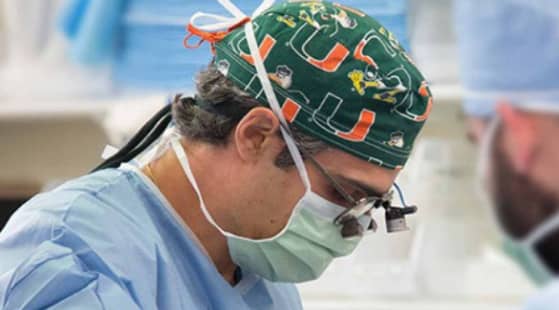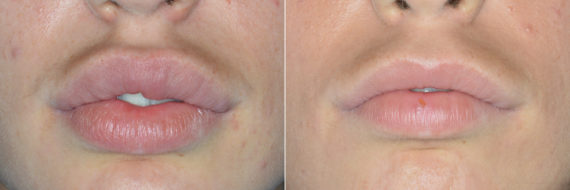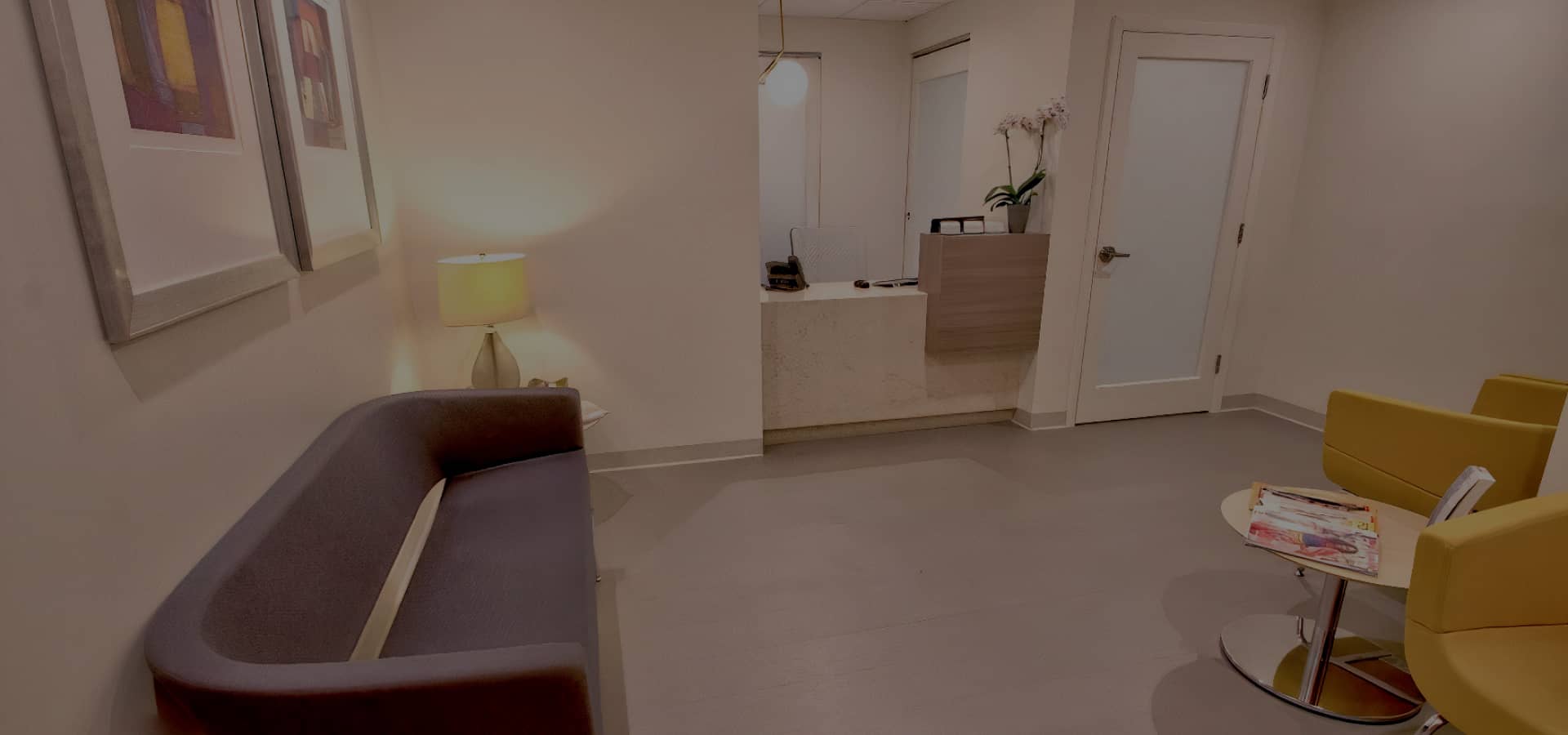Many people who have unusually large lips feel unhappy with how they look. Very large lips might not just look aesthetically unappealing but could also interfere with normal activities such as talking, smiling, and eating. There could be a number of different reasons for an individual to have large lips, e.g. congenital reasons or permanent filler injections.
Whatever the reason behind the large size of your lips, there is a treatment for reducing them. It’s called lip reduction cheiloplasty. Cheiloplasty, a specialized form of lip reduction, is tailored for those with overly large lips, focusing on aesthetic balance and facial harmony. This specialized lip-reduction surgery aims to create a natural harmony between your lower and upper lips while also maintaining or achieving normal lip functionality.
Why Choose Dr. Anthony Bared

- Dr. Bared’s training was first in Otolaryngology at the University of Miami, followed by the awarding of a highly competitive fellowship by the American Academy of Facial Plastic and Reconstructive Surgery at the University of Illinois-Chicago.
- He is Double Board Certified by the American Board of Facial Plastic and Reconstructive Surgery and the American Board of Otolaryngology.
- Dr. Bared has numerous publications and has lectured at various nationwide scientific meetings.
- He also serves as a clinical voluntary Assistant Professor at the Florida International University, Herbert Wertheim College of Medicine.
Am I a Candidate for Cheiloplasty Lip Reduction?
Generally, if you are dissatisfied with the excess volume of your lips, or if you have tried more general lip reduction options in the past to no avail, you may be an excellent candidate for this procedure.
After the removal of the tissue strip, the surgeon closes up the incision with sutures. The entire procedure only takes about 45 minutes.
When the lips are gently parted in a regular lip profile, the lower lip protrudes a little less than the upper lip. When there is an extra protrusion of the lower lip, then the lip structure appears to be disproportionately large. If that is the case with your lip structure, then you might be a suitable candidate for cheiloplasty lip reduction.
Lip Reduction Cheiloplasty: The Procedure
Cheiloplasty lip reduction is a surgical procedure that focuses on reducing lip volume through the removal of lip tissue. This procedure is very straightforward.
Before cosmetic surgery, the facial plastic surgeon usually makes a colored marking on both lips to understand how the contouring needs to be done. How much excision needs to be done is usually decided by the surgeon after observing the lips of the patient in a particular position.
The patient is given local anesthesia (IV sedation) to numb the region. The facial plastic surgeon then makes an incision on the inside of the lip and removes a tissue strip from either one or both lips as per the specific requirements of the patient.
After the removal of the tissue strip, the surgeon closes up the incision with sutures. The entire lip reduction procedure only takes about 45 minutes.

Diverse Applications of Cheiloplasty
Cheiloplasty, while commonly known for its cosmetic enhancements, serves a variety of purposes beyond aesthetic improvement. Understanding these diverse applications can help potential patients make informed decisions.
- Cosmetic Enhancement: Beyond lip reduction, Cheiloplasty can be used for augmenting lip volume, reshaping for symmetry, or rejuvenating aging lips. This versatility makes it a sought-after procedure for those looking to enhance their facial features.
- Trauma Recovery: For individuals who have suffered facial injuries, Cheiloplasty plays a crucial role in reconstructing the lips. Techniques vary from simple scar revisions to complex tissue rearrangements, ensuring functional and aesthetic restoration.
- Congenital Defect Correction: Cheiloplasty is instrumental in correcting congenital lip anomalies, such as cleft lips. These specialized procedures often require multiple surgeries but can significantly improve both function and appearance.
- Medical Conditions: Certain medical conditions, like tumors or infections, can alter lip shape and function. Cheiloplasty can be employed to restore normalcy and alleviate associated symptoms.
- Aging Effects Mitigation: As part of the aging process, lips can lose volume and elasticity. Cheiloplasty can address these changes, helping to maintain a youthful appearance.
Each of these applications requires a tailored approach, considering the individual’s unique needs and desired outcomes. Consultation with a skilled facial plastic surgeon is essential to determine the most appropriate technique for each case.
Types of Cheiloplasty
There are three types:
Lip Augmentation cheiloplasty
This cheiloplasty surgery is carried out on thin lips or lips that have lost their volume due to facial aging. It may be done using three techniques:
- One cheiloplasty surgical technique involves using fats from the buccal fat pads or cheek fat deposits.
- Injectable fillers, such as hyaluronic acid or smooth calcium hydroxyapatite microspheres, can hydrate and rejuvenate the lips, with results typically lasting for about 9-12 months.
- Alloderm, a type of lip implant, is composed of acellular human cadaveric dermis.This procedure is a permanent treatment. These procedures offer excellent results. The lips acquire a natural, young, healthy, and fresh appearance.
- Post-operative Care: Patients are advised to avoid strenuous activities and apply ice packs to reduce swelling. Soft diet is recommended for the first few days.
- Potential Complications: Risks include asymmetry, infection, and allergic reactions. Post-procedure monitoring is crucial for early detection and management.
Reduction cheiloplasty
This type of cheiloplasty surgery is designed for individuals with overdeveloped lips that do not complement their other facial features and is not commonly performed.
- Surgical Process: Involves precise incision inside the lip to remove excess tissue, ensuring balance with facial features. The focus is on maintaining lip functionality while enhancing aesthetics.
- Post-operative Care: Patients should expect mild swelling and are advised to maintain oral hygiene to prevent infection. Soft foods are recommended initially.
- Potential Complications: Include irregularities in lip shape and scarring. Regular follow-ups ensure timely intervention if needed.
Corrective cheiloplasty
Cheiloplasty lip surgery is a viable treatment option for individuals who have experienced lip alterations as a result of factors such as tumors, trauma, burns, or lesions, as well as for those with congenital lip alterations such as harelip.
- Surgical Process: Tailored to address specific issues like congenital defects or trauma. Techniques may vary from simple scar revisions to complex reconstructions.
- Post-operative Care: Special care is given to wound healing, with instructions on cleaning and medication adherence. Dietary adjustments may be necessary depending on the procedure’s extent.
- Potential Complications: Risks include nerve damage and incomplete correction of the defect. Surgeons closely monitor healing to address any concerns promptly.
Lip Reduction Before & After Photos
Each patient is unique and individual results may vary*.
Cheiloplasty Considerations
Cheiloplasty may be performed on the upper, lower, or both lips, but it is not a one-size-fits-all procedure. There are some considerations with lip surgery:
- Cheiloplasty lip surgery involves both surgical technique and considerations of art and aesthetics.
- The ideal size of lips cannot be determined through absolute measurements, as it should be proportionate with the rest of the individual’s facial features such as their nose, chin, and jawline.
- When considering reductions, it’s important to take into account a person’s ethnicity and facial features to maintain balance.
- During the procedure, incisions are made inside the lip to avoid any visible scarring.

Recovery After Lip Reduction Cheiloplasty
After the cheiloplasty lip reduction procedure, your lips might remain swollen for a couple of days. In the period of healing, it is recommended that patients eat soft foods. A lot of the swelling will reduce in just a few days or a week. The typical time reported for complete healing is two weeks.
Patients might consider taking off from work for two to five days. Your surgeon may prescribe certain medications for pain and swelling after the lip surgery for a rapid recovery.
Lips are undeniably the most eye-catching feature on the lower half of your face and can play a significant role in adding to your overall attractiveness. A good smile is something that can instantly make you look more beautiful. If you are self-conscious about your lips size, it might be good to consult your surgeon for cheiloplasty lip reduction.
What are the risks of Lip Reduction Cheiloplasty?
- Overcorrection of the lip
- Under correction of the lip
- Poor wound healing
- Haematoma
- Skin Infection
- Irregular healing of scars
Find Out More During a Consultation
In order to know whether this surgery will be able to offer the results that you desire, it is best to consult an experienced and knowledgeable facial plastic surgeon.
Dr. Anthony Bared, a highly skilled double-board-certified facial plastic surgeon, will answer any questions you may have during a consultation. To arrange an appointment, contact us today.






